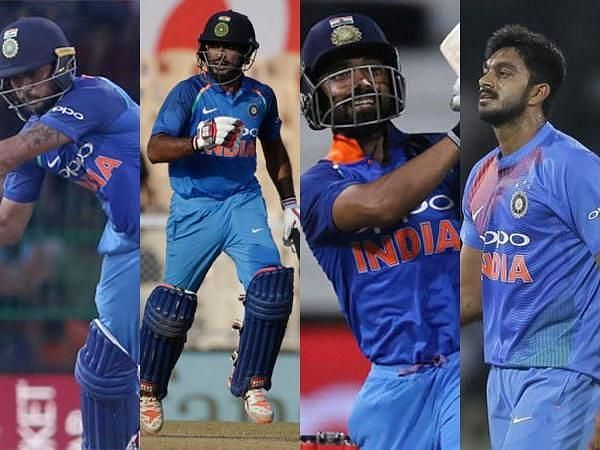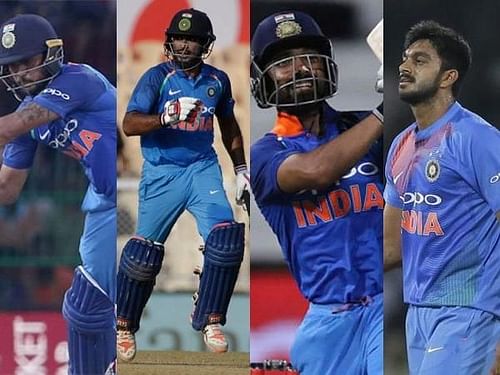
Why has India failed to decode the No.4 conundrum for the last couple of years?

Prior to the World Cup, during the World Cup and after losing in the semi-finals of the World Cup, the most debatable question remains unanswered, ‘who’s the most reliable No.4 Indian batsman in the current pool of players?”
The question remained a debatable topic in the last couple of years, especially after India’s defeat at the hands of Pakistan in the final of the 2017 ICC Champions Trophy. A year before that, sometime in September 2016, chief selector MSK Prasad had taken over the reins of the Indian selection committee.
Three years later, Prasad cannot boast of an impressive credential. While new players who earned their maiden caps love him for all the reasons, veterans who got axed hate him for putting curtains on their career. People on the top bracket of Indian team may hold a mixed bag of emotions towards Prasad as they too might have influenced the selection of every team.
What is so special about the No.4 position in India? Let us turn some pages of history. Sachin Tendulkar evolved as an opening batsman, but he started as a No. 4 batsman who could strengthen the middle order. A little later when Sourav Ganguly and Rahul Dravid came into the side, it was Mohammad Azharuddin who nicely played the sheet anchor role. Then came a period of transition when Yuvraj Singh, Mohammad Kaif and Suresh Raina became household names. All of them were strong middle-order batsmen.
After the historic Natwest Trophy win in 2002, expectations were always going to be high on the Indian middle order. Then came the era of MS Dhoni, who nicely used a combination of players to bat at this crucial position. Every single player who batted at this position was an established household name.
In January 2017, Yuvraj scored a scintillating 150 versus England batting at No. 4. Once he lost his footing in the team, a number of new players came into the side. Apart from prominent names like Shreyas Iyer, Manish Pandey, KL Rahul and Ambati Rayadu, almost half a dozen players were tried and tested to bat at this position.
According to the team management and selection committee, none of the players lived up to the mark. Rayadu was given an extended run but was dropped at the very last moment before the World Cup. Prasad selected Vijay Shankar over Rayadu as he felt the former adds three-dimensional value to the team. Rayadu still waited for his turn when a couple of players got injured during the World Cup. A clearly heartbroken Rayadu then chose to retire from all forms of cricket when he was ignored as a replacement.
The whole sequence of events puts up a very interesting question - what was the brief given to the selectors? Well, the No.4 slot clearly belongs to a middle-order batsman. With the number of players tried and tested in this position, it gives an impression that probably selectors were looking for a stalwart who could seal the No.4 conundrum. There was no shortage of stalwarts either. If not Rayadu, India had the choice of Ajnkya Rahane, Yuvraj and Raina, who could nicely handle the middle order burden. Most teams went into the World Cup with experienced players in their side. Pakistan gave Wahab Riaz a chance after keeping him out of the team for two long years and he didn’t disappoint.
After Ravindra Jadeja’s cameo in the semi-final against New Zealand, it was speculated that he could be tried as India’s new No.4. Ideally, by now the selection committee and team management should put some sense and simplicity into their thought process and focus on winning the upcoming tournaments. Stalwarts are not made in a year’s time. They have to be bred with the right exposure and challenging opportunities. It will take a while for young boys like Rishabh Pant, Prithvi Shaw and others to grow into a man in the cricketing sense. The current squad need a fair amount of rebuilding. Some tough decisions will be taken over the next few years. Some established players may witness a sunset in their careers, while some newbies may capitalize their limited opportunities. It’s time for India to take one step at a time rather than being stuck at the age-old topic of No.4 batting position. There is no conundrum as such. It’s self-created and all hyped up for no good reason.
Follow Sportskeeda for all the latest live cricket score.